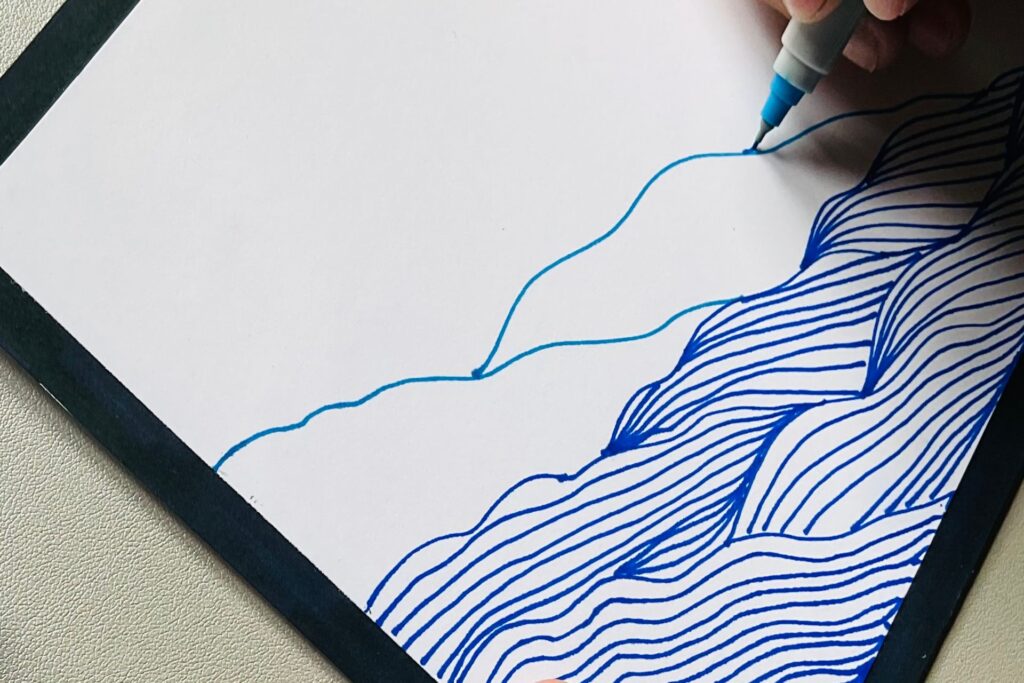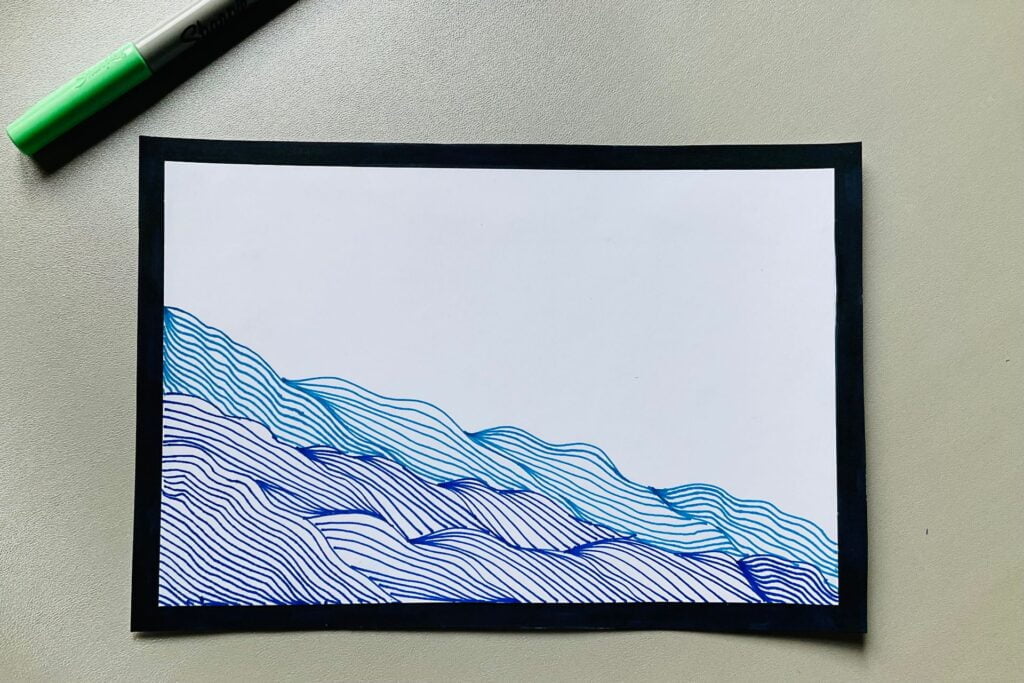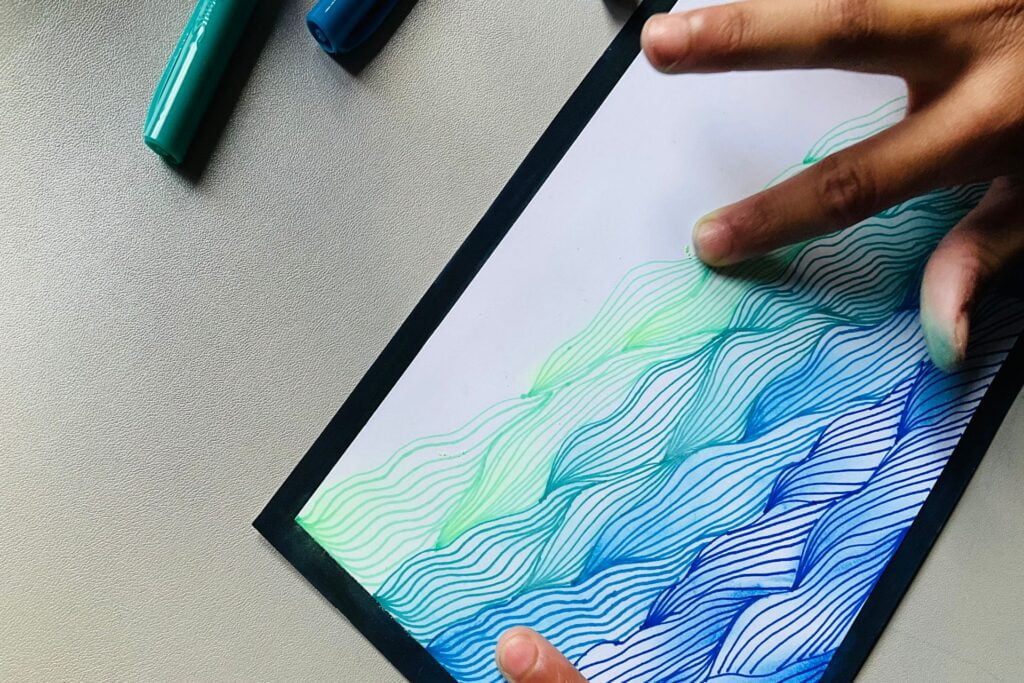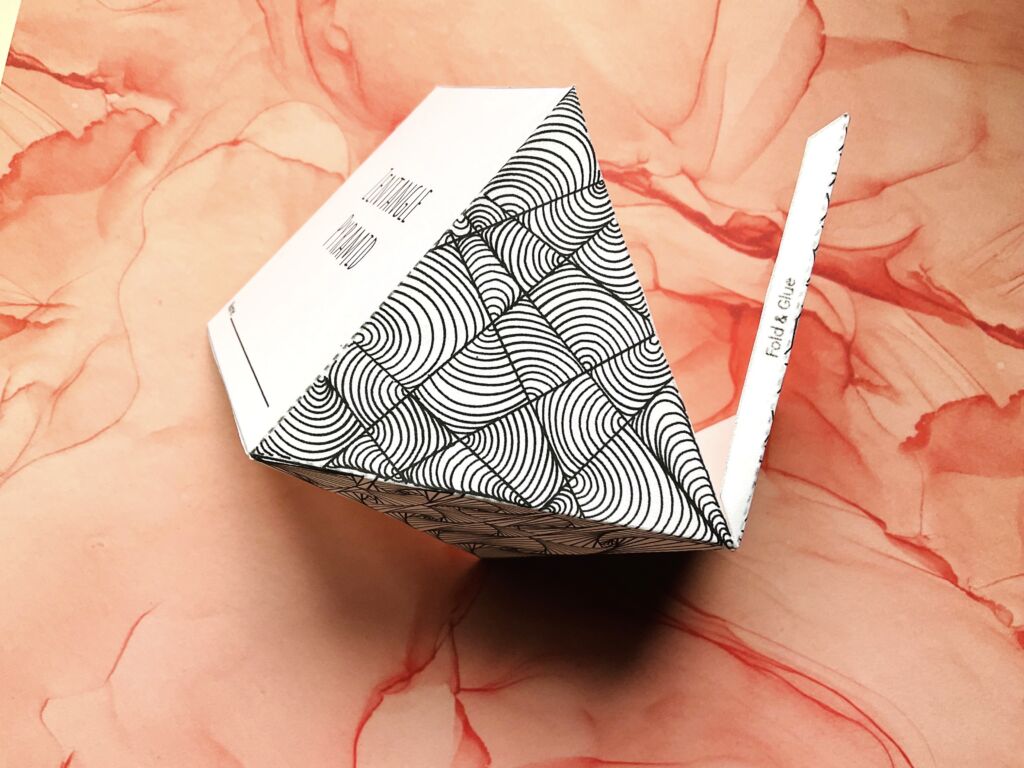Zentangles can seem like complicated designs but there are many zentangles for beginners that are suitable for even very young children. Zentangles are based on a theory created by Rick Roberts and Maria Thomas. The zentangle came from their desire to create an art form that was easy to learn and relaxing, using repetitive patterns to create beautiful images. The word zentangle originates from the word “zen” meaning calm, and “tangle” meaning a collection of overlapping patterns. The process of making zentangles has become a popular patterning art form because of it’s calming and meditative effects. There is an abundance of zentangle patterns available online but you can create your own by simply drawing a line or repeating a simple shape. Zentangles for beginners do not need to be complex. If you can draw a line, you can zentangle!
What Materials do I Need to Zentangle?
You really only need a few materials to get started with your zentangle designs. All that’s required is a pen and paper. You can also use a pencil to add shading and depth to your tangles. Micron pens are recommended for zentangles because they offer a variety of tips but extra-fine Sharpie markers are effective as well, especially for children. Most zentanglers use the pigma micron 01, which is 0.25 mm.

We create most of our zentangles on heavy drawing paper or cardstock. Zentangles are typically done on a 3 ½” x 3 ½” paper “tile”. The small size allows for a detailed art piece that can be completed within a short time frame. If you’d like to create your tangles on a higher quality of paper, I recommend an Italian paper called Tiepolo by Fabriana, which is also used by zentanglers. These are just guidelines, so your artwork can actually be any size, on any type of paper, with a drawing utensil of your choice.

Photo Credit: Charvi Ashtekar
Zentangles are one of Chanel’s favourite calm down tools, especially after a long day of virtual learning. She has pages and pages of doodles and tangles in her sketchbook and on loose scrap pieces of paper. She’s even created beautiful zentangles on top of paper with printed text. You can also encourage your children to experiment with doodling on different surfaces or unique backgrounds, which can add even more dimension to their creations.
Related Posts
Why are Zentangles Liberating?
Similar to doodles, there is absolutely no pressure to create your zentangle patterns in a certain way; the process is completely open. Drawing your zentangle design should be a smooth and liberating process because there is no right or wrong way to do it. With Zentangles, there are no erasers. I encourage my students and children to use a thin sharpie or pen when creating their designs, instead of a pencil. Again this draws a parallel to real life- as there is no eraser in life. With Zentangles, and in life, you discover that even if you make what seems to be a mistake, you can then build on that event as a new pattern and allow it to guide you into unexpected and exciting new directions.
If you love zentangles as much as we do, you’re going to love our Zentangle Pyramid Activity. Just click HERE or the images below to check it out.
Why Everyone Should Zentangle
Here are 10 ways that zentangles can benefit both children and adults:
- Promotes relaxation and decreases stress
- Decreases depression and anxiety
- Increases attention span and ability to concentrate
- It provides a healthy break from screen time
- Encourages mindfulness
- Improves eye-hand coordination
- Helps with emotional processing
- Develops patterning skills
- Improves memory
- It teaches how to own mistakes
For a detailed explanation of the top 5 benefits of doodling/zentangling on the mental health of children and adults, you can check out my blog post called, Doodle Art.
Here is our YouTube video that will teach you how to create easy zentangles for beginners using repeated lines. This doodle is perfect for both children and adults.
YouTube Video Tutorial
Appropriate for Children Ages 4 and up
Prep Time: 5 minutes
For today’s zentangle (for beginners) you’ll need:
- Ultra Fine Point colored Sharpie markers/fine tip colored markers – we used 4 shades of blue in our design
- Cardstock or a regular blank paper
- Chalk Pastels (optional)
Step 1 – Prepare Your Materials
- Get all of your supplies ready for this calming activity.

Step 2 – Draw wavy lines
- Using your darkest color, draw wavy line along the bottom portion of your paper. We started with our darkest color at the bottom of the page and gradually moved up the page with lighter colors. You can also start with your lightest color at the bottom or use your colors in any order.

Step 3 – Add Lines
- Fill in these wavy sections with lines.
- You can try to have your lines in each section start in the same corner or end in the same corner to create a shadowy corner.

Step 4 – Draw More Wavy Lines
- Using your next lightest color, draw wavy lines above the dark section that you just completed.


Step 5 – Add Lines
- Fill in these wavy sections with lines

Step 6 – Repeat
- Repeat steps 2 and 3 with your remaining colors
*You can cover your entire page with this pattern or you can leave a small section at the top blank as part of your design. Leaving a blank space at the top can give your zentangle the appearance of a mountain range or waves in an ocean*


Step 7 – Add Chalk Pastel (optional)
- Find a matching chalk pastel color
- You should notice some darker sections/shadowy parts in each of the wavy sections on your page.
- Add a little bit of chalk pastel (the matching color) to these shadowy sections and blend it out.




Step 8 – Enjoy and Experiment
- This beautiful easy zentangle design can be used on the cover of homemade cards or bookmarks. You can even try experimenting on different backgrounds, with different colors. Watercolor paints would also work well on top of your zentangle art.
TIP: This pattern can also be completed using a black micron pen or black sharpie. If you make your beautiful zentangle black and white, you can use a pencil to add shadows in the corners instead of pastel.
Doodling and zentangles aren’t just for kids! I encourage everyone to grab a piece of paper and a drawing utensil. Start with a simple line and see where that line takes you. You might be pleasantly surprised! There is also an abundance of coloring books available now for both children and adults that focus primarily on fostering mindfulness and creativity. Here are a few of my recommendations:
Please let me know how your zentangles turn out. I’d love to add your creations to our gallery, so upload your photos or send a message to [email protected] Thank you!






9 thoughts on “Zentangles for Beginners (easy) – Mindful Art”
This is really beautiful and calming to look at! I never heard of zentangle before. Thanks for this tutorial and video 🙂
You’re welcome! Zentangles are awesome.
I have real trouble drawing a straight line ! so this is perfect for me… oh …and i’ll get the kids on it as well.
lol! I completely understand. No straight line drawing skills are required for this activity 😉 Hope you and your kids enjoy it!
Love coloring in coloring books. Going to try this next!
Fantastic! I’m a huge fan of coloring books as well. This activity is also a great alternative 🙂
omg it’s so beautiful
Thank you so much! It’s easy too 🙂
Pingback: 7 Mindful and Meditative Drawing Ideas
Comments are closed.